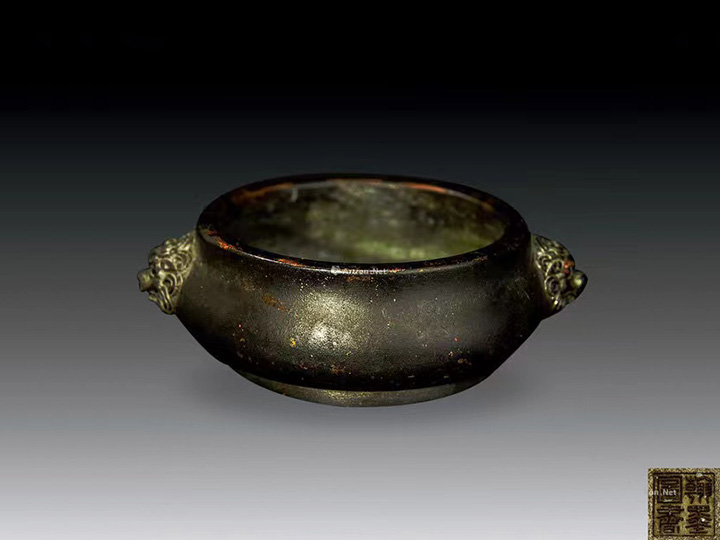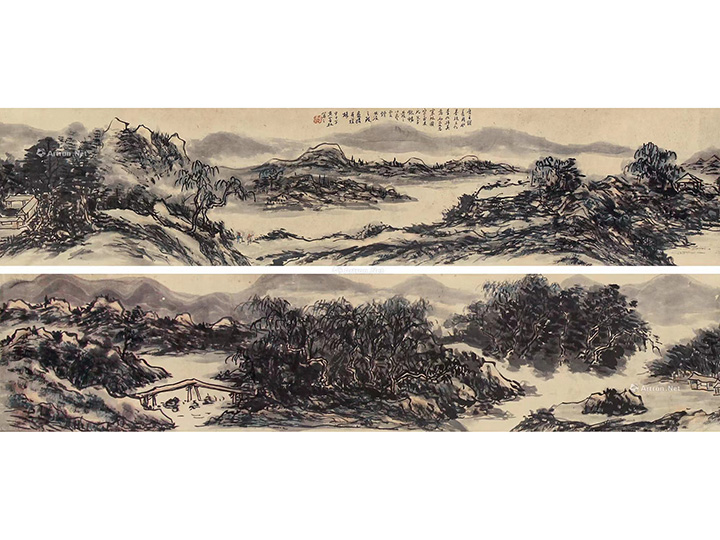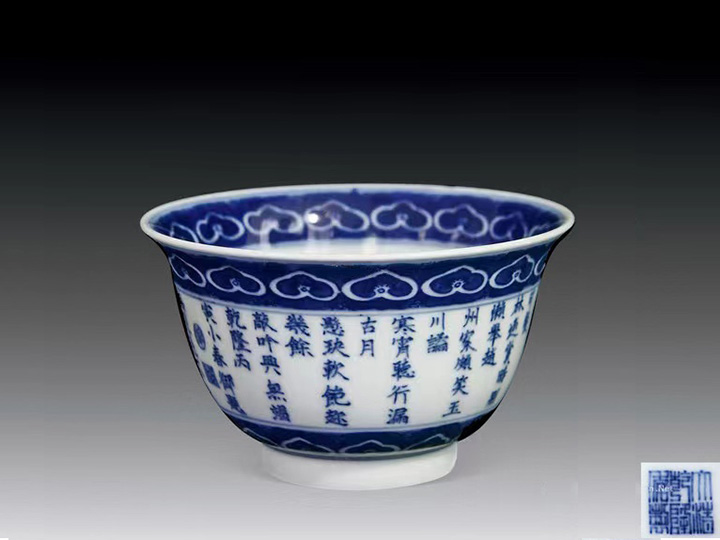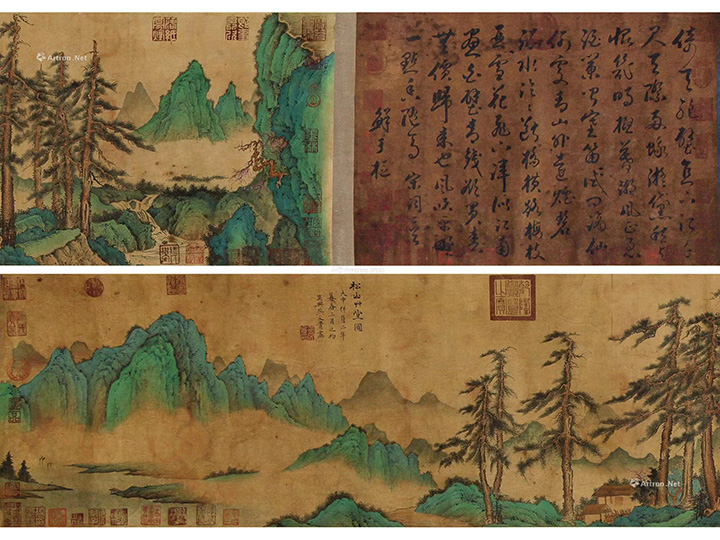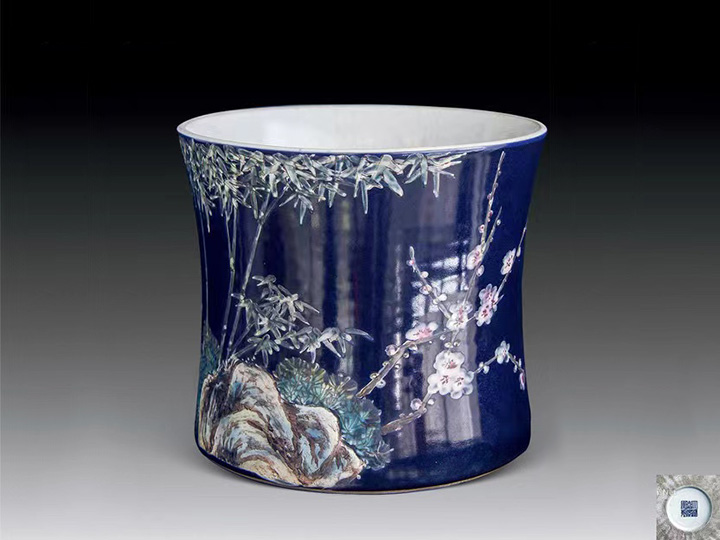The artistic characteristics of blue and white underglaze red porcelain
- 2020-09-27
- 123 Views
The underglaze red series originated in the late Yuan Dynasty over 630 years ago and became popular in the early Ming Dynasty. Due to the difficulty and low yield of underglaze red firing, it gradually disappeared after the mid Ming Dynasty. During the Yongzheng and Qianlong periods, blue and white underglaze red was also introduced.
The underglaze red series originated in the late Yuan Dynasty over 630 years ago and became popular in the early Ming Dynasty. Due to the difficulty and low yield of underglaze red firing, it gradually disappeared after the mid Ming Dynasty. During the Yongzheng and Qianlong periods, blue and white underglaze red was also introduced. The so-called blue and white underglaze red refers to the decoration of two underglaze colors, blue and red, painted on the same object. Made by high-temperature calcination under the cover of transparent glaze. Changed the monotony of only drawing one color before. The blue and red colors complement each other, appearing particularly charming and pleasing to the eye. During the Kangxi reign of the Qing Dynasty, the long lost underglaze red was successfully fired, and its color was relatively stable. During the Yongzheng period, the bright red color scheme of underglaze red was stable and exquisite; The patterns drawn have clear lines after firing, reaching a level of perfection.
During the Yongzheng period, the technique of underglaze red porcelain was comprehensively developed, and the craftsmanship reached a high level in Chinese porcelain production. The painting style also underwent significant changes, shifting from the rough and bold style of the Kangxi period, emphasizing the use of strong and vibrant colors, and from rigid and stimulating shapes to elegant and gentle colors in decorative images. Enamel red can be used as freely as blue and white to express the artistic content. The artistic style of Yongzheng's blue and white glazed red porcelain is highlighted in the following aspects:
1. Enhance the serene atmosphere of the screen
Generally speaking, red is lively and plays a role in enhancing and rendering in paintings, but Yongzheng craftsmen cleverly used the red color of underglaze red to create a particularly serene atmosphere in the painting. The blue and white glazed red "Lantinghui" patterned pen holder collected by the Forbidden City in Beijing has a wide and open picture, with green mountains and ridges, towering rocks, swirling auspicious clouds, trees and pavilions, and a calm and solemn atmosphere. On the field, there are several stone benches and low tables. At the top of the center is a group of literati and intellectuals admiring a long scroll of green bamboo, while on the left are several literati discussing literary matters. The entire painting is painted in blue and white, only in front and behind the pointed pavilion. The small and blooming plum blossoms next to the ancient pine tree are painted in enamel red. Due to the lack of bright copper red and the heavy red color, the entire painting adds a lot of peaceful atmosphere.
2. The picture is delicate and realistic
In the past, underglaze red had unstable color rendering and often had flowing and diffuse phenomena, so quick brushstrokes were often used in painting to create freehand patterns. Simple drying and refining were often used, resulting in blurry and blurred images after firing. During the reign of Emperor Yongzheng, both blue and white and underglaze red colors were stable in color and could be painted using the technique of meticulous sketching, delicate and realistic.
3. Glazed red represents the theme content
Due to the stable color of underglaze red and blue and white porcelain, the effect can be accurately achieved during high-temperature firing in the kiln. Therefore, in the layout and color setting of painting, both blue and white porcelain can be arranged to express the theme content, and underglaze red can be arranged to express the main content. For example, the Yongzheng Imperial Kiln in the collection of the Palace Museum in Beijing, but the inscription is written on the blue and white underglaze red lid jar of the "Great Ming Xuande Nian" inscription. The auxiliary patterns such as the crown, lid edge, neck, shoulder, and bottom of the porcelain jar, such as string patterns, colored clouds, rolling branches and vines, and loop patterns, are drawn with blue and white porcelain, while the theme patterns such as phoenix patterns, mudan, and group grapes in various parts are drawn with underglaze red, which is rich. Beautiful and eye-catching. In the painting, underglaze red is not only the theme pattern, but also occupies a large area.
4. Highlight the theme and have strong decorative value
Due to the maturity of the craftsmanship, blue and white and underglaze red are used in porcelain with a combination of blue and red, resulting in a complete image, greatly enhanced expressiveness, clear hierarchy, and strong decorative value. For example, the Yongzheng style blue and white glazed red three fruit pattern double ear flat vase collected by the Palace Museum in Beijing has a blue and white string and loop pattern on the bottle mouth, folded peony branches on the neck, and blue ears. The string pattern on the belly, rolled branches and vines, and wrapped flowers on the legs are all blue and white, and the folded branches, flowers, and fruits on the belly wall are all blue and white. It can be said that the auxiliary patterns are almost all blue and white, except for peaches, pomegranates, and other fruits and flowers that are red and occupy a small position, but the red color is dazzling, making the theme particularly prominent.

